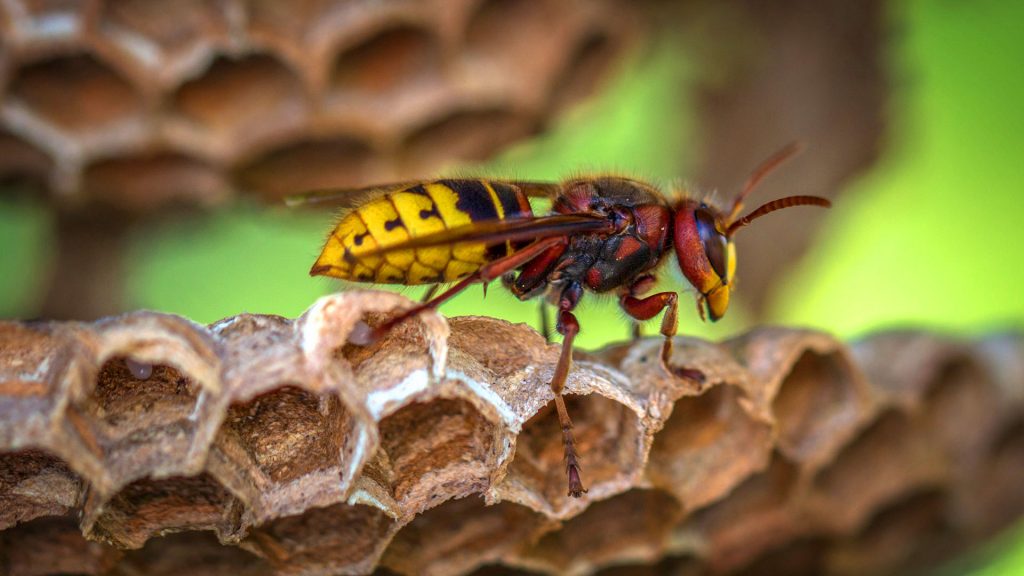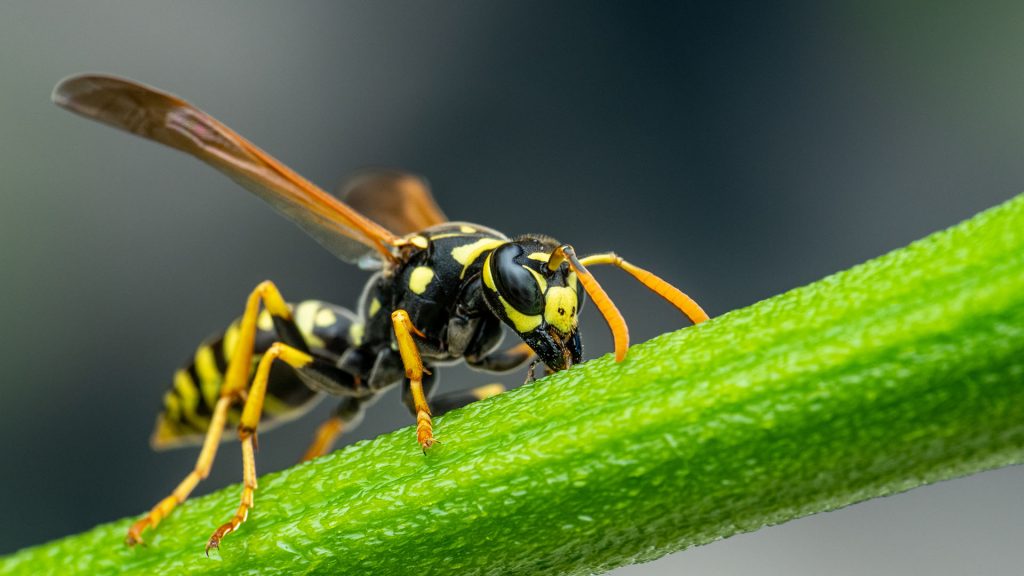
Wasps have been known to ruin more than their fair share of summer picnics. Understandably people start to get a bit nervous when the wasps start flying around their property. So what’s the story with wasps; why are they only around in summer, and what should you do if find a nest on your property.
The Wasp Lifecycle
As the weather starts to get warmer, more than 5,000 different wasp species will begin stirring from their winter hibernation. The queen wasps are the first to emerge after the winter months.
The number one item on the queen’s agenda is building a nest for the new colony. She’s usually looking for somewhere protected from exposure, inaccessible to predators, and close to food sources and building materials.

Once the queen has spotted a location for the colony’s summer residence, she begins to build the nest then lay her eggs. The queen continues laying eggs throughout the summer months. Each generation of eggs hatches into larvae that grow up to join the growing population of worker wasps in the colony.
It is the job of the worker wasps to gather food for the new larvae and continue to build the nest for the ever-growing population. The working wasps also stockpile food for the next generation of queen wasps.
Peak Season for Wasps
The colony usually hits its peak around July. Wasps are more noticeable at this time of the year because most of the colony is out searching for food or materials to expand the nest. By late July, there can be up to 10,000 wasps in a colony and as such can be a good time to call a wasp removal expert.
As the autumn leaves begin to fall, the queen leaves the nest with the males to produce the next generation of queen wasps. As the colder weather sets in, the worker wasps start to die off. Most only have a lifespan of between 12 and 24 days.
The next generation of queens will hatch and grow over the winter months, nourished by the food the workers stored for them, so come spring, they will be ready to start their own colony.

A Colony in the Neighborhood
Generally, wasps do not travel far from their nest, so if you start noticing more than a couple of wasps daily, odds are there’s a nest nearby. Wasps are not by nature aggressive; however, they are territorial and will attack if the nest is threatened.
Wasp traps work to good effect when left around the property, but if you see an increase in the number of wasps, you probably want to find out where the nest is and have it removed, especially if you have children or pets.
Where to Look for the Nest
Wasps have some favorite spots when it comes to building nests. These include roof eaves, garages, woodpiles, compost piles, dog kennels, garden decking, and lofts. It is not unheard of for a queen to start a nest in an unused room or quiet indoor corner of the house if she has the opportunity. Essentially the nest could be anywhere that is undisturbed, dry, and dark.
The best way to find out where the nest is located is to watch the wasp activity as they will fly back and forth to the nest several times throughout the day.
Call the Professionals
By the middle of summer, the nest could be the size of a football and house up to 10,000 wasps. At this point, retreat and live to fight another day. Do not approach the nest.
Instead, call the Skyes Pest Control wasp removal technicians, who are fully trained in wasp nest removal. They have the equipment and safety gear to remove the nest safely.
Call Us On
Bradford: 01274 753 170 – Leeds: 01133 229 078 – Mobile: 07796 615260
If you need pest control services in Bradford, Leeds or anywhere in the surrounding 25 mile radius.
